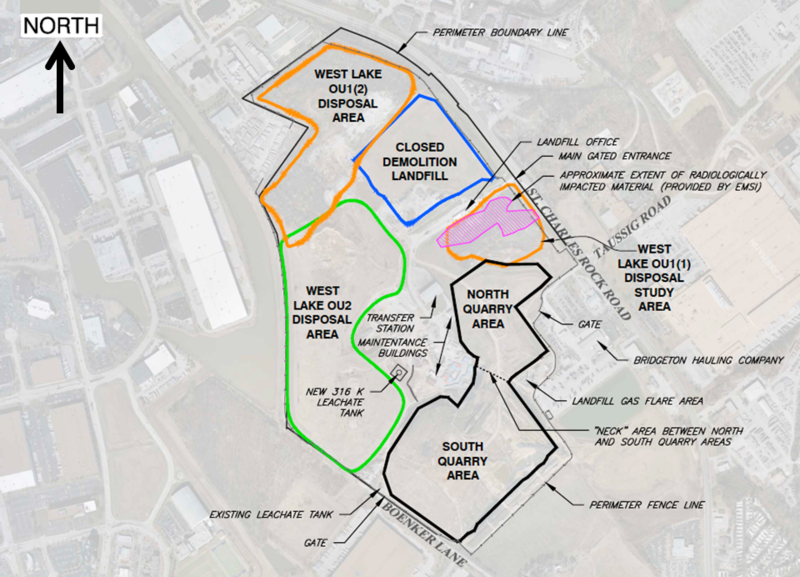A great deal of nuclear weapons development and production took place around St. Louis during the Cold War. I have blogged before about the problems they are having with two landfills in the area. (See Radioactive Waste 28 - Bridgeton And West Lake Landfills posted on May 14, 2013.) I thought it was time for an update on the situation after a recap of the problem.
"The West Lake landfill in Bridgeton, Missouri near St. Louis contains over eight thousand tons of nuclear waste. This old waste is left over from Mallinckrodt Chemical Company’s uranium processing operation during the Cold war. The West Lake Landfill is designated as an Environmental Protection Agency Superfund site. The old landfill has none of the modern safety features such as a liner to prevent leakage into the groundwater or a cap to prevent gases from escaping. It is sitting a few miles upstream from a reservoir that supplies drinking water to St. Louis."
"The Bridgeport landfill is located within a thousand feet of the buried nuclear waste. Normally, this should not be a reason for increased concern but, unfortunately, there is a fire burning underground in the landfill. Temperatures underground are way above normal levels. The company that manages the landfill, Republic Services, says that the horrible odor from the burning landfill that is polluting the air miles away, is not a safety hazard. On the other hand, the Missouri Department of Health and Senior Services has detected dangerous levels of benzene and hydrogen sulfide in the air around the landfill."
The West Lake landfill was the site of illegal dumping in 1973 of nuclear waste from uranium processing at Mallinckrodt Chemical. Some of the waste dates back to the Manhattan Project to create the first atomic bomb during the 1940s. The
West Lake landfill was designated a Superfund cleanup site in1990 but the EPA is still trying to figure out how to clean it up.
The Bridgeport Landfill has been burning underground since 2010. The county where the landfill is located developed a plant in 2014 to deal with a worst case scenario if the fire in the Bridgeport landfill reached the nuclear waste in the West Lake landfill. A "catastrophic event" could potentially "send up a plume of radioactive smoke over a densely populated area near the city's main airport." The plan to deal with that possibility was never publicized until this week when a local radio station got their hands on a copy.
The plan calls for development of emergency shelters in St. Louis Country and nearby St. Charles County. These shelters would be used to house people who would be evacuated in case of the "catastrophic event." Private and volunteer groups as well as the federal government might be called on to help out depending on how severe the disaster was.
A county official said that the plan "is not an indication of any imminent danger." County officials claim that the situation is "contained" and told residents not to panic. Republic Services, the company that runs both the Bridgeport landfill and the West Lake landfill said that "interceptor wells" have been dug to capture gases accumulating below the surface at Bridgeport and that there are other safeguards that should prevent the fire from reaching the nuclear waste at West Lake. A Republic Services representative said that their landfill "is safe and intensively monitored."
Republic Services is being sued by the Missouri Attorney General over the noxious fumes emitted at the Bridgeport landfill. The AG said recently that he was concerned because radiological contamination has been found in trees outside of the West Lake landfill perimeter. In addition, there is evidence that the underground fire has moved past two of the interceptor wells and is getting closer to the West Lake landfill. The AG says that Republic Services "does not have this site under control."
EPA aerial view and diagram of West Lake Landfill:
